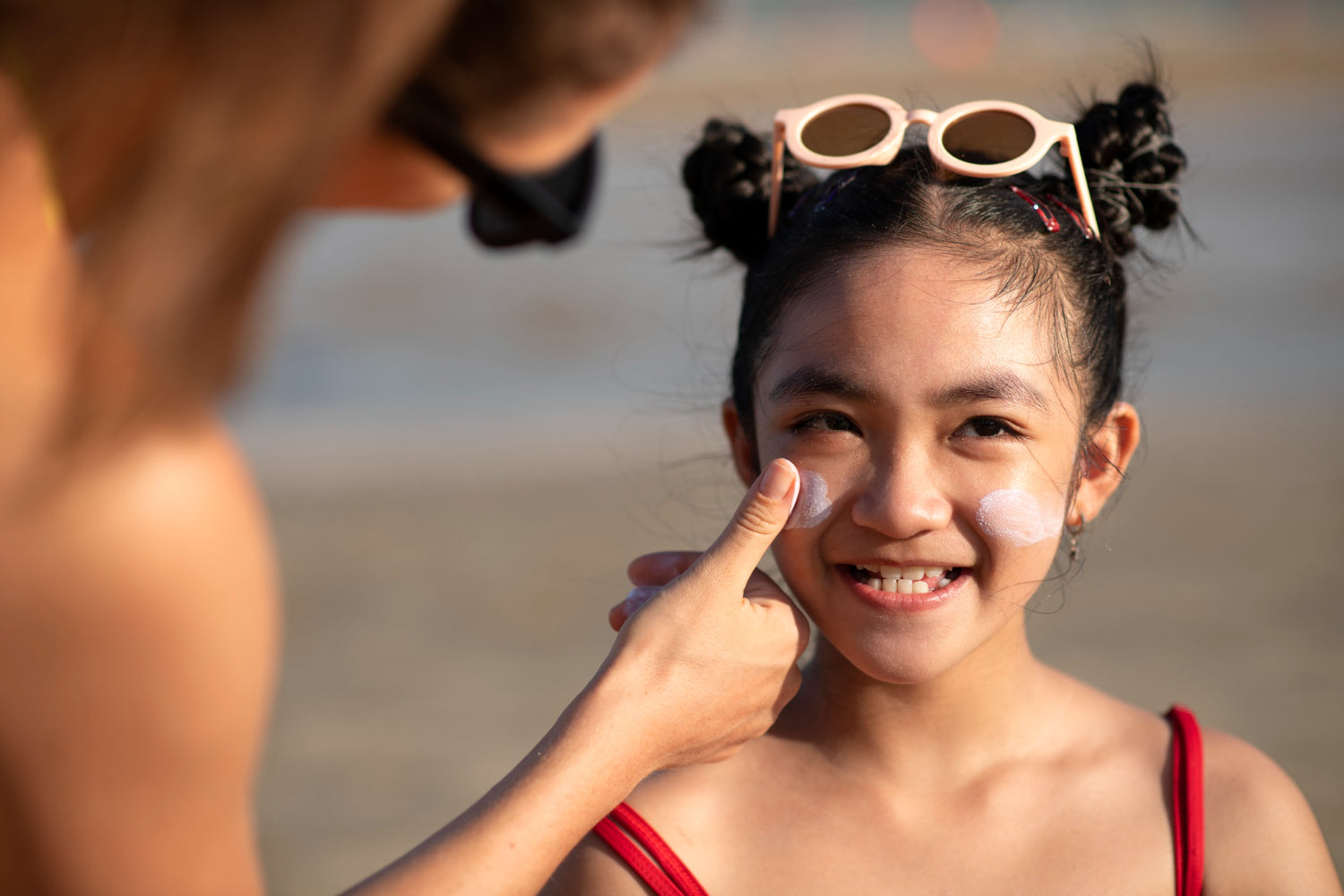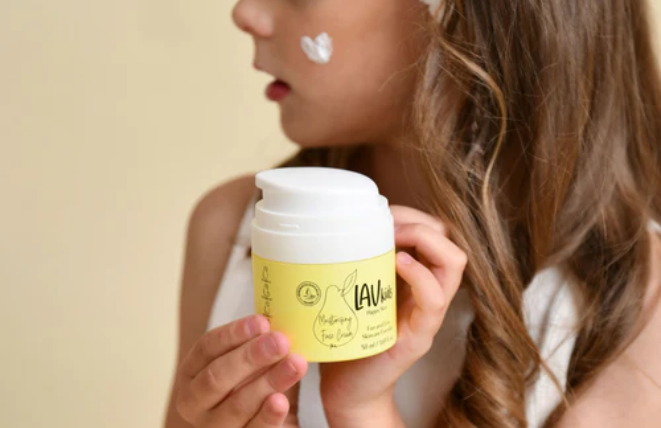
Is Salicylic Acid Safe for Kids? When and How to Use It
Do you think that acne is just a teenage problem? Well, that's not. In recent years, more kids are experiencing early signs of breakouts such as tiny pimples, clogged pores, and oily skin that starts showing up before puberty even knocks. Parents find it difficult to navigate seamlessly through the skincare regime of their kids. One ingredient that keeps popping up in product labels and recommendations is salicylic acid.
But the big question remains—What is it, and is salicylic acid safe for kids? The answer lies in understanding how it works, its benefits, and how to use it responsibly for younger, more delicate skin.
Key Takeaways
-
Salicylic acid should be used cautiously in children, especially those under 12 years old.
-
Overuse or high concentrations can lead to salicylate toxicity, which is more dangerous for kids due to their smaller body size.
-
Low concentrations (typically 0.5% to 2%) in topical products are generally considered safer, but still should be used under guidance.
-
Applying salicylic acid on large skin areas or broken/inflamed skin increases absorption and risk of side effects.
-
It may be used to treat mild acne, warts, or keratosis pilaris but always under pediatrician or dermatologist advice.
-
For younger children, doctors often recommend safer alternatives due to the risk profile of salicylic acid.
-
Can cause skin irritation, redness, peeling, or dryness—kids’ sensitive skin may react more.
-
Always check with a pediatrician or dermatologist before using products with salicylic acid on children.
What Is Salicylic Acid and How It Fights Acne From the Inside Out?
Salicylic acid is a beta-hydroxy acid (BHA) commonly used to treat acne, oily skin, and clogged pores. Derived from willow bark, this powerful ingredient doesn't just sit on the surface of the skin; it goes deep. It penetrates pores and dissolves the oil and dead skin cells that cause pimples and blackheads to form.
Unlike many harsh acne treatments that dry out or irritate sensitive skin, salicylic acid works more gently, making it a possible option for mild breakouts in kids. It helps regulate sebum (oil) production, reduce inflammation, and prevent future breakouts, all while being kind to younger skin when used at the right concentration (typically 0.5–2%).
Kids can experience acne due to hormonal changes, environmental factors, or simply genetics. Salicylic acid steps in like a tiny warrior, clearing up clogged pores before they turn into angry pimples and maintaining a cleaner, healthier skin surface.
Benefits of Salicylic Acid for Kid's Skin
Can kids use salicylic acid on their face? Yes, they can. When used thoughtfully, it offers a gentle but effective defence against early acne. So, how does it benefit a kid's skin?
Exfoliates the Skin
Salicylic acid is a chemical exfoliant, meaning it helps remove dead skin cells without the need for scrubbing. For kids, this is especially important because physical exfoliation can be too abrasive. Gentle exfoliation helps prevent buildup on the skin's surface that can lead to clogged pores, dull skin, and irritation.
Unclog Pores
Kids may start developing oily skin or clogged pores even before full-blown acne begins. Salicylic acid works its magic deep inside the pores, breaking down oils and debris that cause blackheads and whiteheads. This makes it easier to prevent those tiny bumps from turning into bigger skin issues.
Reduces Inflammation
Early acne can be red, swollen, and sometimes painful. Salicylic acid has anti-inflammatory properties that help reduce redness and soothe irritated skin. This is particularly helpful for kids, as their skin is more reactive and prone to inflammation from even small breakouts.
Prevents the Onset of Acne
Is salicylic acid safe for a 12-year-old? Well, Salicylic acid doesn't just treat acne it prevents it from forming. Regular use in gentle formulations can help keep pores clear and reduce the likelihood of breakouts in the first place. This preventative approach is key for kids who are starting to experience early signs of acne or clogged skin.
When Should Your Kid Start Using Salicylic Acid?
Most pediatric dermatologists suggest that kids around 9 to 11 years old may benefit from introducing salicylic acid into their skincare routine especially if they are starting to experience oily skin, blackheads, or occasional pimples. However, the decision depends on skin type, acne severity, and overall sensitivity.
If your child is experiencing consistent breakouts or struggling with self-esteem due to skin concerns, it may be time to include a kid-friendly salicylic acid product in their skincare regimen. Look for low-concentration formulas with natural ingredients (0.5% to 1%), and always perform a patch test before full use.
Remember, it's not about rushing into skincare trends; it's about helping your child feel comfortable and confident in their skin while keeping it healthy.
How to Use Salicylic Acid on Your Kid's Skin?
There is a process that tells you about how to safely include salicylic acid in your kid's skincare routine. Let's know more about it:
Acne-Spot Treatment
If your child has just one or two pimples, a spot treatment is the best way to start. These treatments contain a small amount of salicylic acid and can be applied directly to the blemish. It works by reducing inflammation and speeding up healing, without drying out the entire face. Apply only on clean skin once or twice daily.
As a Cleanser
Salicylic acid cleansers are ideal for kids with more consistent breakouts or oily skin. These formulas typically contain 0.5% to 1% salicylic acid and are gentle enough for once-a-day use. Encourage your child to cleanse their face with lukewarm water and their fingertips, avoiding harsh scrubbing. Follow with a fragrance-free moisturizer to keep the skin barrier strong.
As a Pimple Patch
These tiny, transparent patches are not only fun but also super effective and kid-friendly. Some contain salicylic acid along with soothing ingredients like tea tree oil or Centella. Kids can wear them overnight or for a few hours during the day. They work by delivering targeted treatment while keeping their hands away from the blemish.
Conclusion
There is definitely a "yes" when asked, "Is Salicylic acid safe for kids?". It can be a safe and helpful solution for managing early acne in kids when used properly and in moderation. It helps clear up clogged pores, calm inflammation, and stop acne before it starts, all while being gentle enough for younger, developing skin.
That being said, skincare for kids should always prioritize mild, non-irritating products designed specifically for their age group. Always opt for natural, organic, and chemical-free skincare products for kids to help your child feel good about themselves and feel their best.
Lav Kids believes in skincare that's safe, simple, and specifically designed for kids. Our collection is dermatologist-tested, free from harsh chemicals, and crafted to care for growing, sensitive skin.
We have everything your child needs for a healthy skincare routine that's both effective and enjoyable. Explore our all skincare collection and give your child the gift of clear, confident skin powered by nature, backed by science, and approved by parents.
Frequently Asked Questions
1. At what age can kids safely use salicylic acid?
Kids around 9–11 years old can safely start using low concentrations of salicylic acid for early acne.
2. Is salicylic acid safe for sensitive skin?
Yes, in lower concentrations (0.5–1%), it's generally safe but should be patch-tested first on sensitive skin.
3. Can salicylic acid be used for acne in kids?
Yes, it's effective for treating blackheads, whiteheads, and mild breakouts in kids when used correctly.
4. What concentration is considered safe for kids?
A concentration of 0.5% to 1% is typically safe and effective for kids' delicate skin.
5. How often should salicylic acid be applied?
Start with once daily or every other day to see how the skin responds, then adjust if needed.
6. What side effects should parents watch for?
Look out for dryness, redness, peeling, or irritation, especially in the first few uses.
7. Is salicylic acid better than benzoyl peroxide for kids?
Salicylic acid is generally gentler and better suited for mild acne and sensitive or younger skin.



